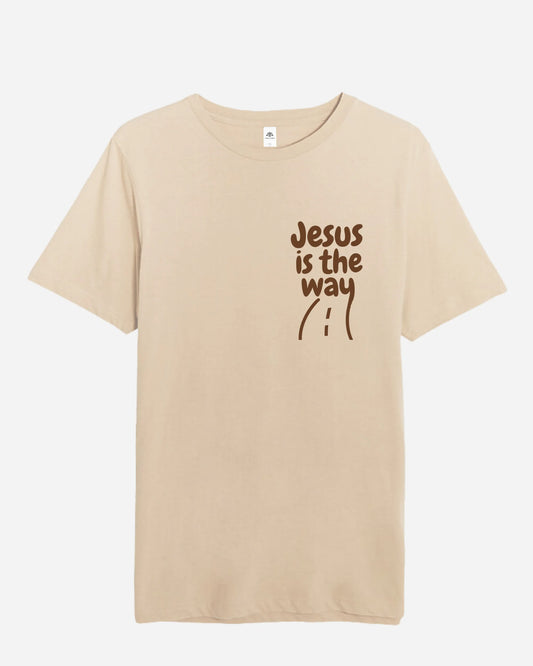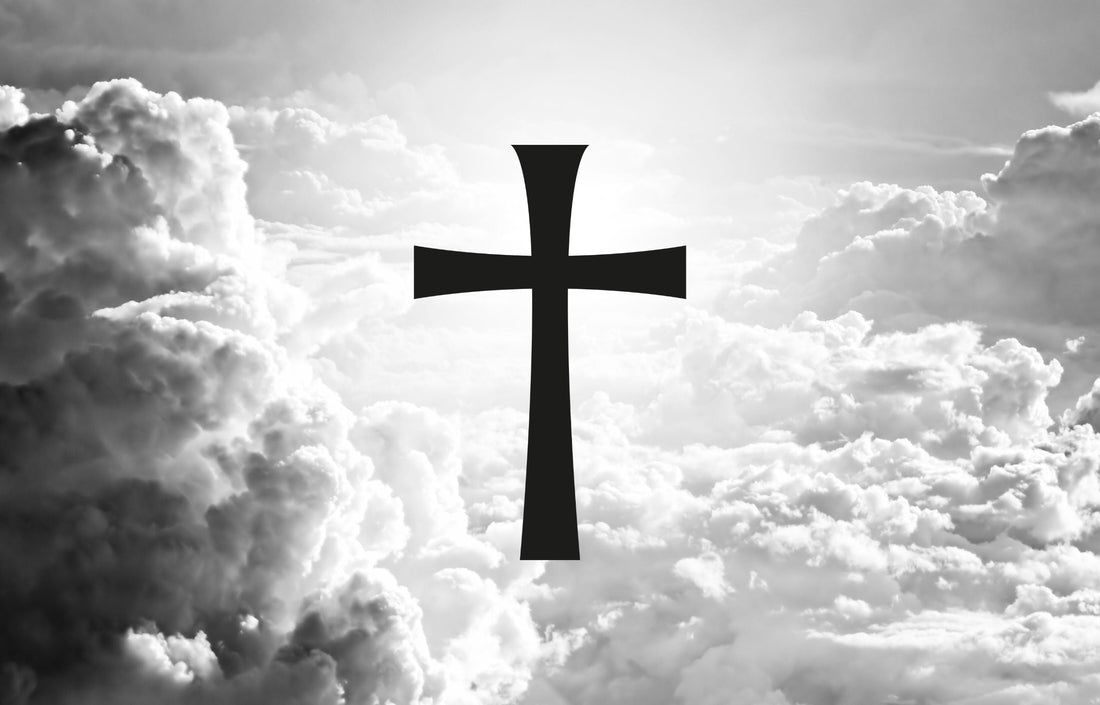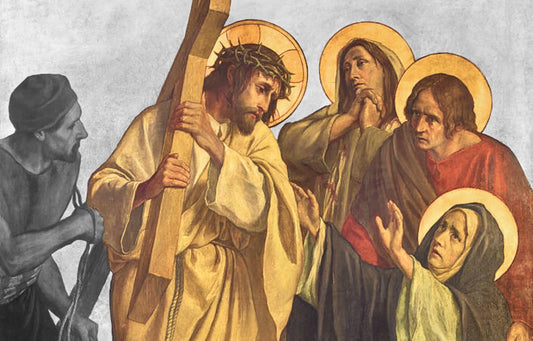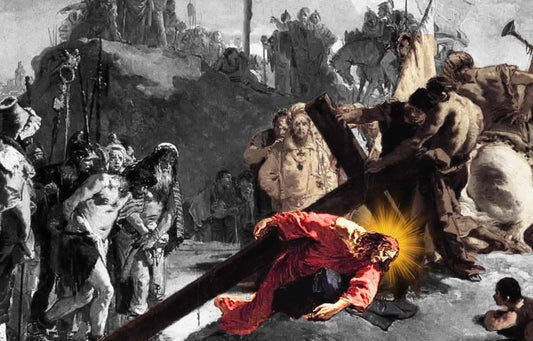Table of content
- 1. What Is the Byzantine Cross?
- 2. Historical Origins of the Byzantine Cross
- 3. Theological Symbolism
- 4. Byzantine Catholic Cross vs. Byzantine Orthodox Cross
- 5. The Byzantine Cross in Christian Art and Architecture
- 6. Differences Between the Byzantine Cross and Other Christian Crosses
- 7. Final Thoughts
What Is the Byzantine Cross?
The Byzantine Cross (or Crux Immissa Quadrata) is a Christian symbol that originated in the Byzantine Empire (330–1453 AD). Unlike the later Orthodox Cross (with three bars), the Byzantine Cross typically features a single horizontal bar with flared or decorative ends, often set against a square or slightly rectangular shape. It symbolizes Christ’s triumph, imperial authority, and the fusion of faith and power in Byzantine culture.
Key Features of the Byzantine Cross
- Single horizontal bar (unlike the Orthodox Cross’s three bars).
- Equal or slightly flared arms, sometimes with gemmed or ornate designs.
- Often set within a square or circle, representing the cosmos and Christ’s universal reign.
- Greek inscriptions (IC XC for Jesus Christ and NIKA meaning "He conquers").
This cross was not just a religious emblem but also a political and cultural statement, reflecting Byzantium’s identity as a Christian empire.
Historical Origins of the Byzantine Cross

The cross design emerged in the Byzantine Empire (330–1453 AD), whose capital, Constantinople, shaped much of Orthodox Christianity’s aesthetics. Emperor Constantine the Great's conversion to Christianity and his Edict of Milan (313 AD) legalized the faith and began the era of Christian imperial art.
The Byzantine Cross isn't just an ornament; it was a theological statement in visual form.
By the 6th century, the cross appeared in:
- Mosaics (e.g., Ravenna’s Basilica of San Vitale).
- Coinage (emperors like Justinian I used it on currency).
- Processional crosses (carried in imperial and religious ceremonies).
Key Byzantine Sites Featuring the Cross:
- Hagia Sophia (Constantinople’s grand cathedral).
- Basilica of San Vitale (Ravenna, Italy).
- Monastery of Hosios Loukas (Greece).
Influence on Slavic Christianity
When Byzantine missionaries like Saints Cyril and Methodius traveled to convert the Slavs in the 9th century, they brought not only the Gospel—but the Byzantine Cross (Obolensky, 1971). As a result, the cross became central to:
- Russian Orthodoxy
- Bulgarian and Serbian Churches
- Balkan Christian identity
To this day, churches across Eastern Europe feature the three-barred cross on their domes and relics. Example: The Cathedral of Christ the Saviour in Moscow prominently displays the Byzantine Cross in its murals and iconostasis—a vivid continuation of its spiritual heritage.
Theological Symbolism

In Byzantine thought, the cross wasn’t just about personal salvation—it was a cosmic and imperial reality. Christ was often depicted as Pantocrator (Ruler of All), and the cross with its double-barred design became a visual shorthand for His dual authority: heavenly and earthly, divine and human, suffering and reigning.
This interpretation mirrored the role of the Byzantine emperor himself, who ruled as a representative of divine order. By placing the double-barred cross on coins, seals, and military standards, the empire signaled that Christ’s authority undergirded the entire civic and cosmic structure
Byzantine Catholic Cross vs. Byzantine Orthodox Cross
Though nearly identical in form, the Byzantine Catholic Cross and the Byzantine Orthodox Cross are rooted in different branches of the Christian family—both tracing their origins to the Byzantine Empire but diverging in ecclesial allegiance after the Great Schism of 1054.
While the Byzantine Cross (single-barred, flared design) was prominent in the early Byzantine Empire, its later variations—particularly the three-barred Orthodox Cross—became central to both Eastern Orthodox and Byzantine Catholic traditions. Though nearly identical in appearance, their theological and ecclesiastical contexts differ.
Design Similarities
Both crosses feature:
- Three horizontal bars (top for INRI, middle for Christ’s hands, slanted footrest).
- Rich ornamentation (engraved, enameled, or gemmed in liturgical use).
- Greek or Cyrillic inscriptions (IC XC NIKA – “Jesus Christ Conquers”).
Historical Divergence
- Pre-1054: Both traditions shared the same cross design under the Byzantine Empire.
- After the Great Schism of 1054: The cross remained identical, but the Orthodox Church rejected papal authority, while Byzantine Catholics retained ties to Rome.
- Modern Usage: Byzantine Catholics (e.g., Melkites, Ruthenians) often call themselves “Orthodox in communion with Rome”—their crosses are visually indistinguishable but exist within a different ecclesiastical framework.
Symbolic Unity & Division
- Shared Heritage: Both crosses proclaim Christ’s kingship, sacrifice, and the hope of resurrection.
- Ecclesial Distinction: The Orthodox Cross symbolizes autocephaly (self-governing churches), while the Byzantine Catholic Cross represents unity with Rome.
The Byzantine Cross in Christian Art and Architecture

The Byzantine Empire was a powerhouse of sacred art, and the cross was central to its visual theology.
Mosaics and Icons
- Found in domes, apses, and iconostasis screens
- Gold backgrounds symbolized divine light
- The cross often included Greek inscriptions: IC XC (Jesus Christ) and NIKA (He Conquers)
Relics and Processional Crosses
Many were richly decorated with enamel, gems, and gold. For example, the Cross of Justin II (6th century) held in the Vatican is a masterpiece of Byzantine craftsmanship.
Contemporary Orthodox Architecture
Churches in Eastern Europe, Greece, and Russia still feature this cross prominently in their domes and altars. A vivid example is the Church of Saint Sava in Belgrade, Serbia—one of the largest Orthodox churches in the world—where the Byzantine Cross crowns the massive dome and appears throughout its iconography.
Differences Between the Byzantine Cross and Other Christian Crosses
| Cross Type | Shape | Tradition |
| Latin Cross | Simple vertical and horizontal bar | Western Christianity |
| Greek Cross | Four equal arms | Early Christianity |
| Orthodox Cross | 3 bars (top, middle, slanted foot) | Eastern Orthodoxy |
| Byzantine Cross | Often squared or flared | Eastern Christianity |
Notable Distinction: The slanted foot bar is unique to the Byzantine and Russian Orthodox styles. Use this visual comparison to educate readers or customers considering symbolic apparel choices.
Final Thoughts
The Byzantine Cross is a visual creed—a confession of faith forged in gold, stone, and tradition. In Christian theology, a creed is more than a statement—it's a compact expression of belief, often used in worship to affirm spiritual truths. So when we call the Byzantine Cross a 'visual creed,' we mean it functions like a silent sermon: declaring Christ's kingship, sacrifice, and the eternal drama of salvation without needing a single word.














